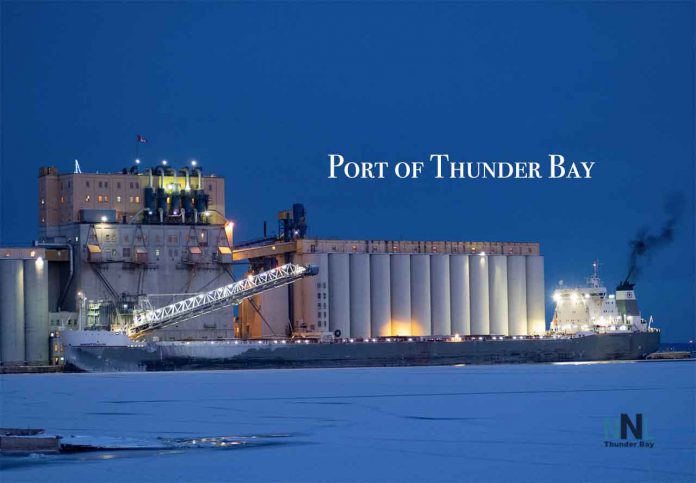THUNDER BAY – BUSINESS – All one has to do is look out over Thunder Bay on Lake Superior and see the number of ships. The overall numbers are up, and so are the tonnage figures.
The 2019 shipping season has wrapped up in the Port of Thunder Bay with the departure of the final cargo-laden vessel on Sunday, January 12. The season featured notably higher cargo shipments than the past several years.
Strong shipments of prairie-grown grain and other dry bulk commodities from Western Canada buoyed the port’s cargo tonnage to 9.3 million metric tonnes (MMT), the highest since 2014.
Grain volumes increased by 500,000 MT this year as Thunder Bay elevators funneled larger quantities of canola to markets in Europe and South America. Coal tonnage hit a seven-year high, while potash shipments remained above average for a third-straight year.
Both the foreign and domestic vessel fleets contributed to the strong season in Thunder Bay; vessel calls and cargo tonnage for both fleets were up compared to the prior year. Three domestic vessels will winter at Keefer Terminal for seasonal refurbishment.
The Port of Thunder Bay is projecting another strong season in 2020. Thunder Bay grain terminals continue to set the bar for efficiency, producing the fastest railcar and vessel turnaround times of all Western Canadian grain ports. A highlight for the 2020 season will be increased shipments of wind turbine cargoes for Western Canadian wind farm developments.
Cargo Statistics for Port of Thunder Bay
Port of Thunder Bay 2019-12 Cargo Statistics by james1572 on Scribd







